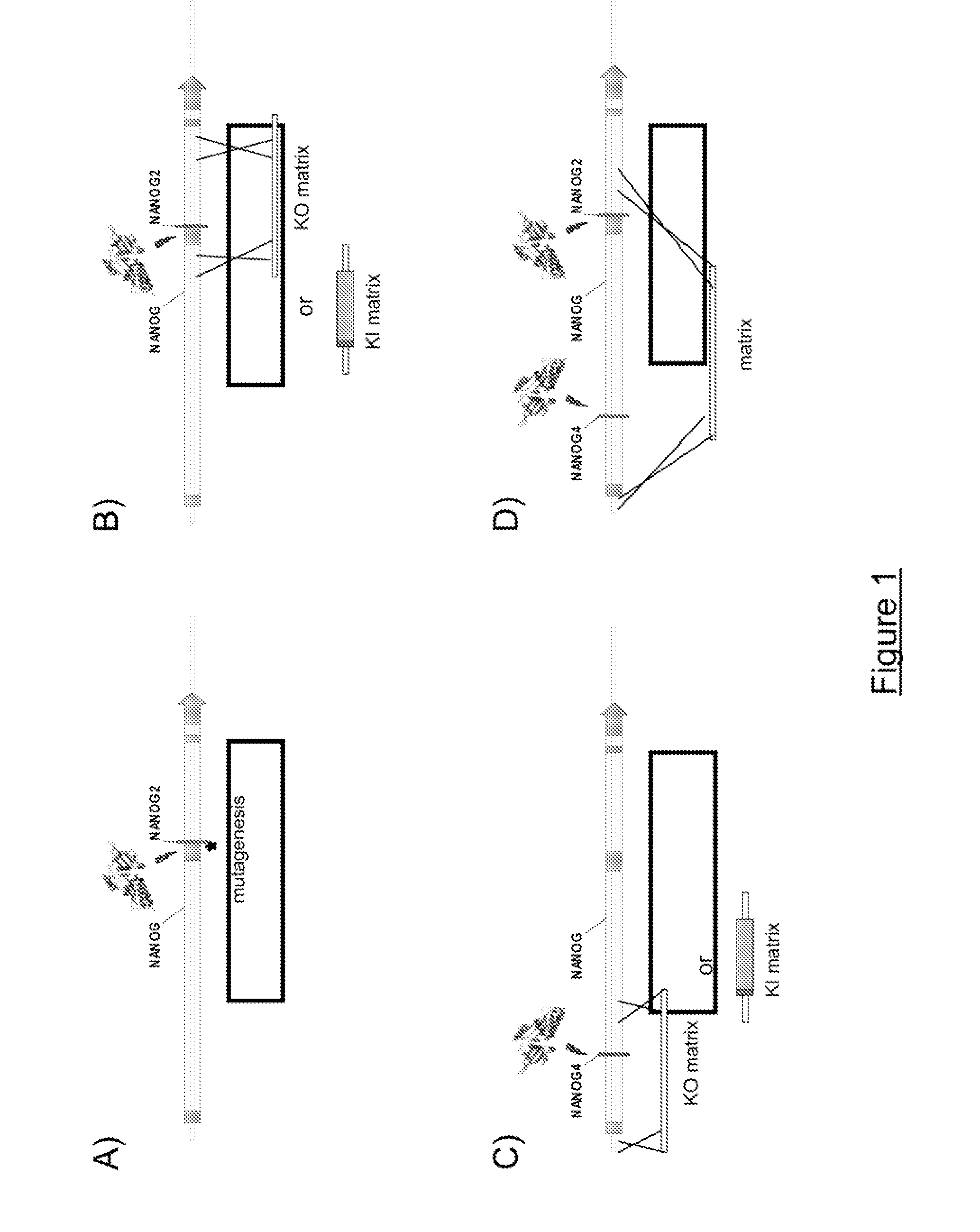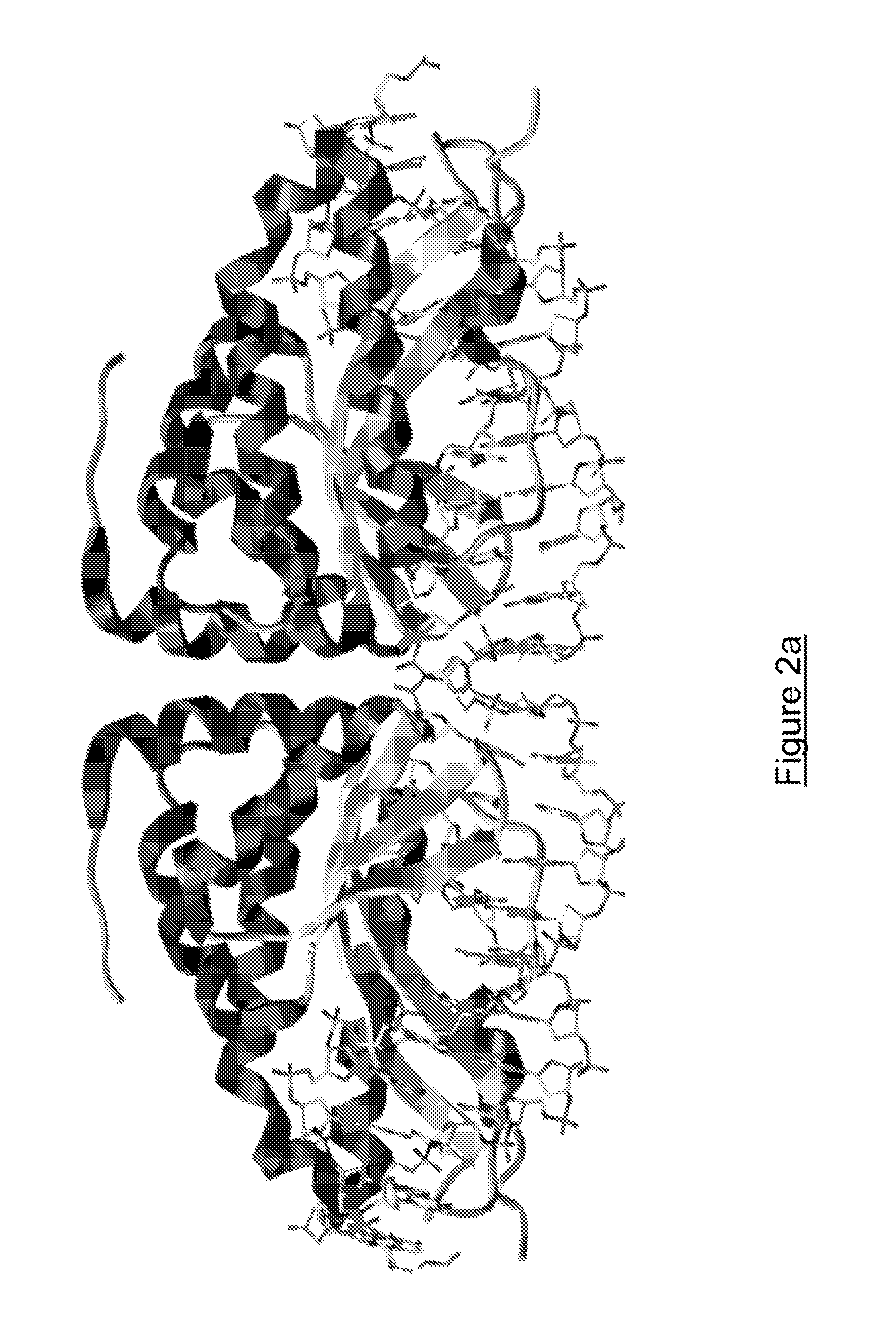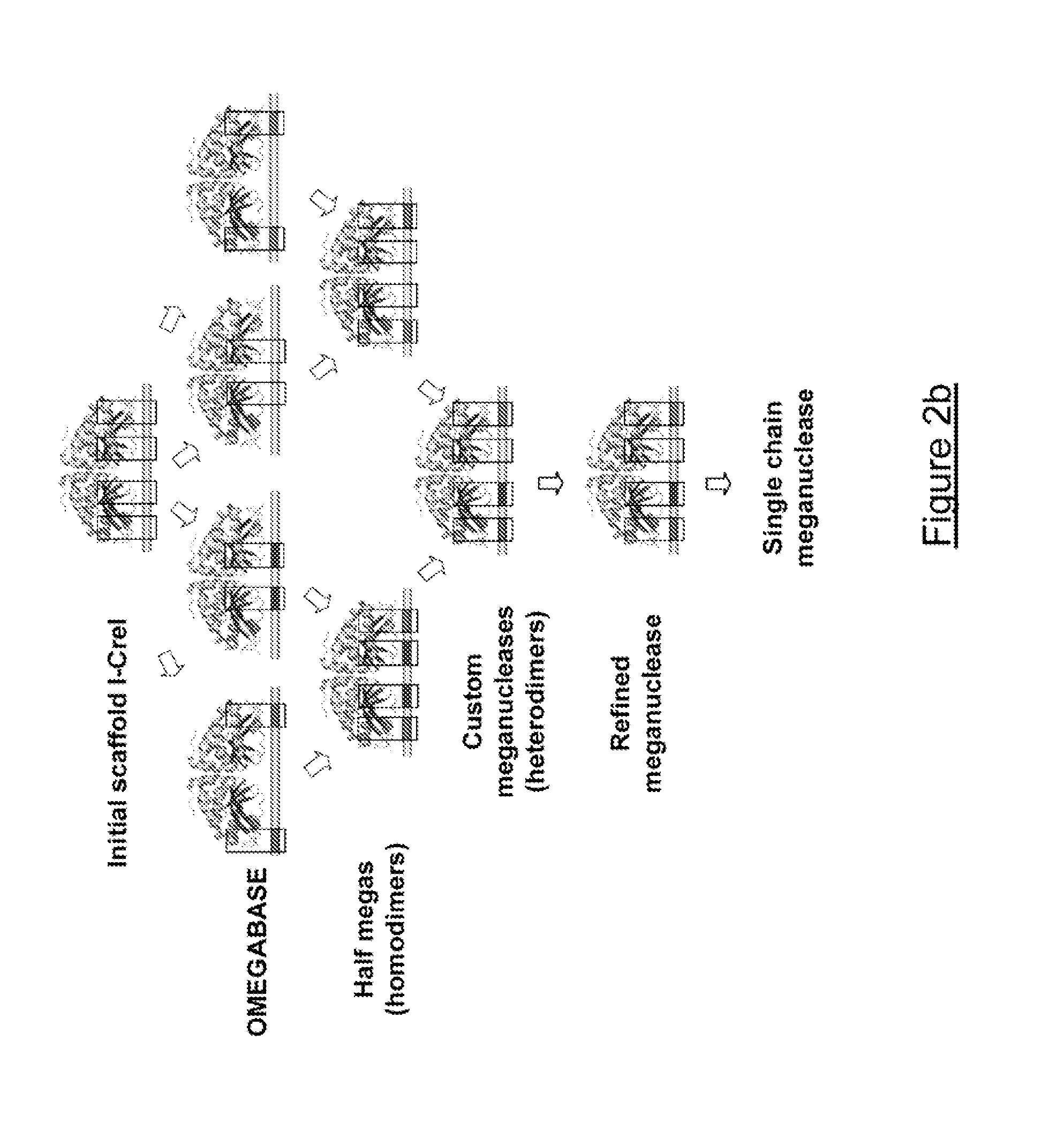Meganucleases variants cleaving a DNA target sequence in the nanog gene and uses thereof
a technology of dna target sequence and nanog gene, which is applied in the direction of peptides, drug compositions, and genetically modified cells, can solve the problems of heterogeneous populations of ips cells and problems for further differentiation steps
- Summary
- Abstract
- Description
- Claims
- Application Information
AI Technical Summary
Benefits of technology
Problems solved by technology
Method used
Image
Examples
example 1
Engineering Meganucleases Targeting the NANOG2 Site
Protein Design
[0277]I-CreI variants targeting the NANOG2 site were created using a combinatorial approach, to entirely redesign the DNA binding domain of the I-CreI protein and thereby engineer novel meganucleases with fully engineered specificity for the desired NANOG gene target. Some of the DNA targets identified by the inventors which validate the overall concept of the invention are shown in Table I above. Derivatives of these DNA targets are given in FIGS. 3 & 5. The combinatorial approach, as illustrated in FIG. 2 and described in International PCT applications WO 2006 / 097784 and WO 2006 / 097853, and also in Arnould et al. (J. Mol. Biol., 2006, 355, 443-458) and Smith et al. (Nucleic Acids Res., 2006) was used to redesign the DNA binding domain of the I-CreI protein and thereby engineer novel meganucleases with fully engineered specificity.
[0278]a) Construction of Variants Targeting the NANOG2 Site
[0279]NANOG2 site is an examp...
example 2
Engineering Meganucleases Targeting the NANOG4 Site
[0286]a) Construction of Variants Targeting the NANOG4 Site
[0287]NANOG4 site is an example of a target for which meganuclease variants have been generated. The NANOG4 target sequence or NANOG 4.1 (AC-TGA-AC-GCT-GTAA-AAT-AG-CTT-AA, SEQ ID NO: 18) is located in intron 1 of NANOG gene at positions 1222-1245 of NC000012 entry (NCBI).
[0288]The NANOG4 sequence is partially a combination of the 10TGA_P (SEQ ID NO: 14), 5GCT_P (SEQ ID NO: 15), 10AAG_P (SEQ ID NO: 16) and 5ATT_P (SEQ ID NO: 17) target sequences which are shown on FIG. 5. These sequences are cleaved by mega-nucleases obtained as described in International PCT applications WO 2006 / 097784 and WO 2006 / 097853, Arnould et al. (J. Mol. Biol., 2006, 355, 443-458) and Smith et al. (Nucleic Acids Res., 2006).
[0289]Two palindromic targets, NANOG4.3 (SEQ ID NO: 20) and NANOG4.4 (SEQ ID NO: 21) and two pseudo palindromic targets, NANOG4.5 (SEQ ID NO: 22) and NANOG4.6 (SEQ ID NO: 23), wer...
example 3
Cloning and Extrachromosomal Assay in Mammalian Cells
[0295]a) Cloning of NANOG2 and NANOG4 Targets in a Vector for CHO Screen
[0296]The targets were cloned as follows using oligonucleotide corresponding to the target sequence flanked by gateway cloning sequence; the following oligonucleotides were ordered from PROLIGO. These oligonucleotides have the following sequences:
NANOG2:(SEQ ID NO: 57)5′-TGGCATACAAGTTTCCAACATCCTGAACCTCAGCTACACAATCGTCTGTCA-3′,NANOG4:(SEQ ID NO: 58)5′-TGGCATACAAGTTTACTGAACGCTGTAAAATAGCTTAACAATCGTCTGTCA-3′,
[0297]Double-stranded target DNA, generated by PCR amplification of the single stranded oligonucleotide, was cloned using the Gateway protocol (INVITROGEN) into CHO reporter vector (pCLS1058). Target was cloned and verified by sequencing (MILLEGEN).
[0298]b) Cloning of the Single Chain Molecules
[0299]A series of synthetic gene assembly was ordered to Gene Cust. Synthetic genes coding for the different single chain variants targeting NANOG gene were cloned in pCL...
PUM
| Property | Measurement | Unit |
|---|---|---|
| MW | aaaaa | aaaaa |
| clonal density | aaaaa | aaaaa |
| length | aaaaa | aaaaa |
Abstract
Description
Claims
Application Information
 Login to View More
Login to View More - R&D
- Intellectual Property
- Life Sciences
- Materials
- Tech Scout
- Unparalleled Data Quality
- Higher Quality Content
- 60% Fewer Hallucinations
Browse by: Latest US Patents, China's latest patents, Technical Efficacy Thesaurus, Application Domain, Technology Topic, Popular Technical Reports.
© 2025 PatSnap. All rights reserved.Legal|Privacy policy|Modern Slavery Act Transparency Statement|Sitemap|About US| Contact US: help@patsnap.com



